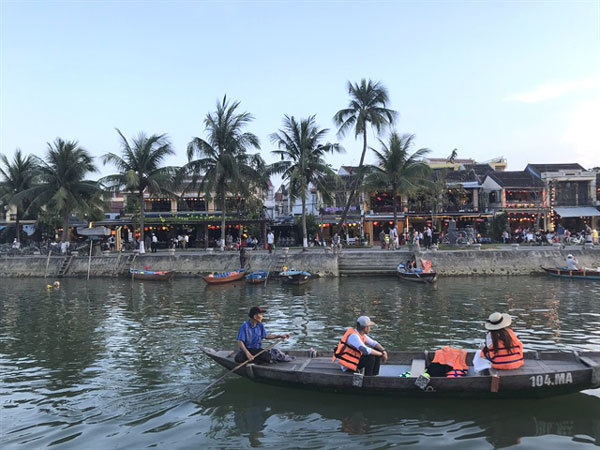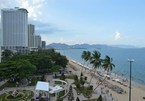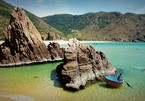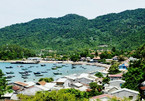 |
| A corner of Hoi An, a popular tourism city in the central coastal region. — VNS Photo Xuan Dang |
In recent years, the number of tourists to the region has exploded but has accounted for only 12.4 per cent of the country's total tourism income.
The central coastal region has a coastline of nearly 1,400 km with many islands, including the Hoang Sa (Paracel) and Truong Sa (Spratly) archipelagos. In addition, there are ecotourism sites, including three national parks and 14 nature reserves.
It also has four out of eight of the country's World Heritage sites, almost 300 cultural and historical relics and revolutionary relics, including 12 special national monuments. This area is also home to ethnic communities with diverse cultures.
According to the Coordinating Committee for the central coastal region, tourist numbers have shown double-digit growth in the past 10 years.
In the 2010-2018 period, the number of tourists to the region increased significantly. Last year, the number of visitors reached 35,000, accounting for 39 per cent of the total number of tourists in the entire country.
Tourism growth has created more job opportunities and increased income for local people.
To make tourism a key economic sector of the region, leaders of provinces and cities in the area have committed to promote linkages in planning and infrastructure development.
In recent years, localities in the region have invested in transport infrastructures such as roads, waterways, railways and airways.
Prime Minister Nguyen Xuan Phuc has noted that transport infrastructure in the region has improved greatly and that authorities should work together to connect ports to promote sea tourism and upgrade airports to attract more foreign tourists.
Nguyen Ngoc Thien, Minister of Culture, Sports and Tourism, has directed local authorities to improve tourism policies and tourism development plans He said that it was necessary to create diverse tourism products, train human resources, improve advertising, and identify regional features that can be promoted in each province and city.
Thien also said that localities must continue to work together on tourism plans and cooperate to create tourist products.
Dang Ngoc Dung, deputy chairman of Quang Ngai Province’s People Committee, said: "The province has signed co-operation agreements with neighboring provinces to invest in infrastructure construction and local tourism promotions."
In addition, Da Nang has also worked with other provinces and tourism industry associations to develop tourism products and human resource training. — VNS

Tourism boom fuels property market in central region
Real estate in coastal central localities has proved its attractiveness to both investors and buyers thanks to the booming tourism industry.

Aviation, tourism to spur central Vietnam's economic development
Experts all agree that the development of the aviation industry with more airports and air routes put has helped change the central region.

Biodiversity declining in Vietnam's central coastal areas
Because of pollution, climate change and overexploitation, marine biodiversity in the central region is declining.
 The central coastal region continues to face challenges in tourism development even though the area is rich and diverse in natural and cultural resources.
The central coastal region continues to face challenges in tourism development even though the area is rich and diverse in natural and cultural resources.